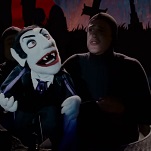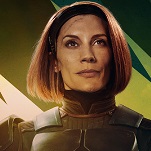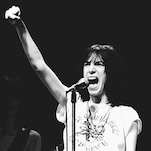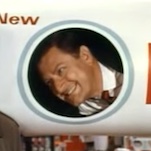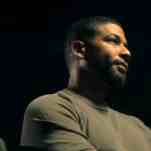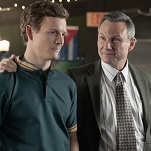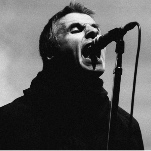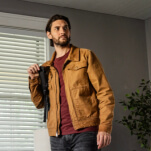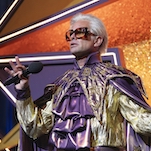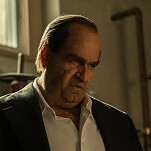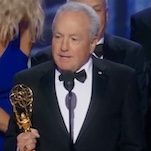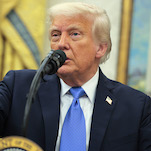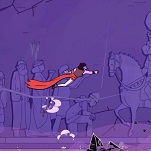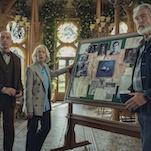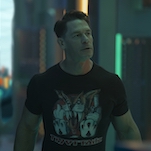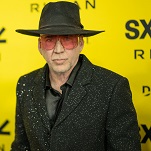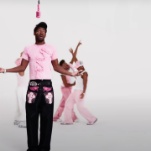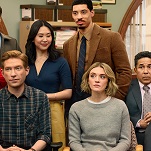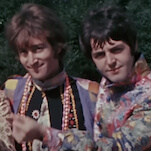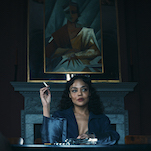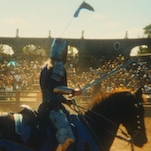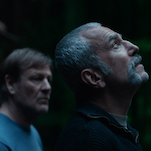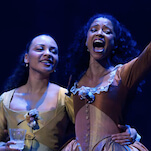The final still from For All Mankind season two finale Photo: Apple TV+
Season two of Apple TV+ drama For All Mankind takes place in the 1980s and, much like season one, which was set in the ’70s, the show transports viewers not just into a different era but straight into the marvels of space. Created by Ronald D. Moore, Matt Wolpert, and Ben Nedivi, the series reimagines the space race between the U.S. and Russia, with NASA astronauts striving to catch up after Soviet cosmonauts become the first humans on the moon. This concept requires a special effects team capable of delivering on its ambitious premise. The show’s VFX team, with supervisor Jay Redd, doesn’t just create profound imagery of spacecrafts hurtling across stars, or what the Earth looks like from the moon, as a plethora of space movies have done before. For All Mankind must keep up the space wonder for 10 hours per season, a demand that only grew in season two, where a lot of the drama is actually set on the surface of the moon. The show’s continued ability to thrill and inspire awe is why it should be nominated for an Emmy in the Outstanding Special Visual Effects category.
The premiere, “Every Little Thing,” establishes the grander scale—and challenges—of season two. NASA astronauts Ed Baldwin (Joel Kinnaman), Gordo Stevens (Michael Dorman), and Danielle Poole (Krys Marshall) set up the Jamestown colony on the moon in season one. We see how the base has expanded in the intervening years, and the lunar surface itself is illuminated with a massive solar flare. The opening moments are a crucible for veteran astronaut Molly Cobb (Sonya Walger), who’s trapped outside Jamestown and attempts to save fellow astronaut Wubbo Ockels (Bjørn Alexander) from being exposed to lethal levels of radiation. This is also a test for Redd and his team, along with visual effects company Method Studios, who, essentially, must create an atmosphere (including the lunar “dust” that rises during the event), where there is none. Molly is awestruck by what she witnesses on the moon—essentially “raindrops on its surface”—as much as viewers are during this wondrous scene, one that took many months to prepare, according to Redd.
For All Mankind’s universe-building draws from American space history and the cultural change that swept the ’70s and ’80s, while contextualizing facts with fiction. The scripts, rich character development, and moving performances make the show a must-watch, but the beautiful VFX are the show’s beating heart. Season two goes big with the lunar-set storylines, as the U.S. and Russia both claim their dominance on Earth’s satellite. Both countries mine the moon’s surface or fly around in reusable crewed landers called LSAMs. These are fabricated but major events that the VFX team renders credulous. In the final two episodes of season two—spoiler alert!—Jamestown turns into a war zone. This leads to a big twist for Gordo and his ex-wife Tracy Stevens (Sarah Jones) in the finale, “The Grey,” as they commit to an impossible task while wrapped in duct tape. The momentous arc is only boosted further by composer Jeff Russo’s haunting score and the VFX’s wide-angled glimpse, as Gordo and Tracy both appear to run the lunar surface.
The VFX team even brings the marvels of space to life on the golden visors of the astronauts’ space suits. They display (in 3D!) the view being seen by the person inside the helmet, and we immediately understand why the astronauts so frequently take a sharp breath when out on the surface or in one of the vehicles. In yet another spectacular moment from “Every Little Thing,” the Jamestown astronauts excitedly look forward to watching the sun rise, and the projected effect (also due to smart lighting tactics) allows audiences to live the moment.
For All Mankind has just as pivotal stories taking place on Earth, at the NASA headquarters in Houston, which feature multiple large screens that play back the footage from Jamestown or various space stations like Skylab. The pixelated footage on TV crafted by the VFX team captures the real-life experience of watching NASA launches from home or a bar, as when Ed and his wife Karen Baldwin (Shantel VanSanten) watch the Sea Dragon (inspired by the 1962 design for a rocket that never was never built) lift off in episode six, “Best Laid Plans.”
The second season also ventures into the deepfakes territory. Redd and his team use technology to modify speeches given by President Ronald Reagan so they reflect the state of affairs on the show, which differ from actual history. In an interview with The Ringer about the creation of some scarily accurate deepfakes, the showrunners detail how they used footage of Diane Lane’s interview with Johnny Carson on The Tonight Show in 1983 so it looks like Carson is interviewing Tracy in “Every Little Thing.” Much like the space elements, these deepfakes and the granular details of NASA HQ’s computer scenes add depth to the science-fiction drama as well as verisimilitude. The show’s special visual effects, aided by stellar lighting, camerawork, and costumes, draw viewers into For All Mankind’s gripping alternate reality.

